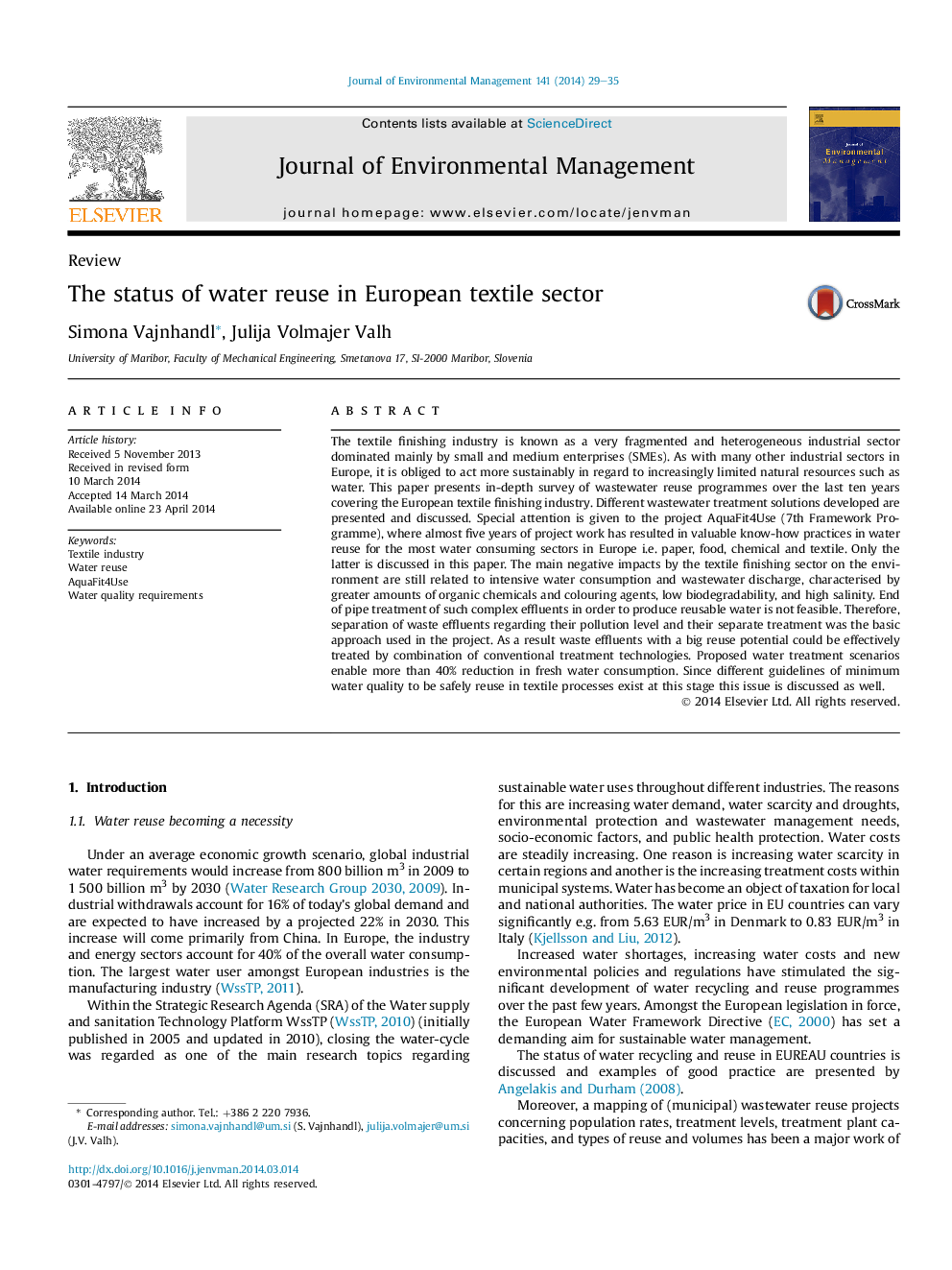| کد مقاله | کد نشریه | سال انتشار | مقاله انگلیسی | نسخه تمام متن |
|---|---|---|---|---|
| 1055906 | 1485271 | 2014 | 7 صفحه PDF | دانلود رایگان |
• Water reuse implementation in European textile industry is critically discussed.
• Technology and water quality criteria bottlenecks are discussed.
• Valuable water reuse know-how practices for textile SMEs are presented.
The textile finishing industry is known as a very fragmented and heterogeneous industrial sector dominated mainly by small and medium enterprises (SMEs). As with many other industrial sectors in Europe, it is obliged to act more sustainably in regard to increasingly limited natural resources such as water. This paper presents in-depth survey of wastewater reuse programmes over the last ten years covering the European textile finishing industry. Different wastewater treatment solutions developed are presented and discussed. Special attention is given to the project AquaFit4Use (7th Framework Programme), where almost five years of project work has resulted in valuable know-how practices in water reuse for the most water consuming sectors in Europe i.e. paper, food, chemical and textile. Only the latter is discussed in this paper. The main negative impacts by the textile finishing sector on the environment are still related to intensive water consumption and wastewater discharge, characterised by greater amounts of organic chemicals and colouring agents, low biodegradability, and high salinity. End of pipe treatment of such complex effluents in order to produce reusable water is not feasible. Therefore, separation of waste effluents regarding their pollution level and their separate treatment was the basic approach used in the project. As a result waste effluents with a big reuse potential could be effectively treated by combination of conventional treatment technologies. Proposed water treatment scenarios enable more than 40% reduction in fresh water consumption. Since different guidelines of minimum water quality to be safely reuse in textile processes exist at this stage this issue is discussed as well.
Journal: Journal of Environmental Management - Volume 141, 1 August 2014, Pages 29–35
